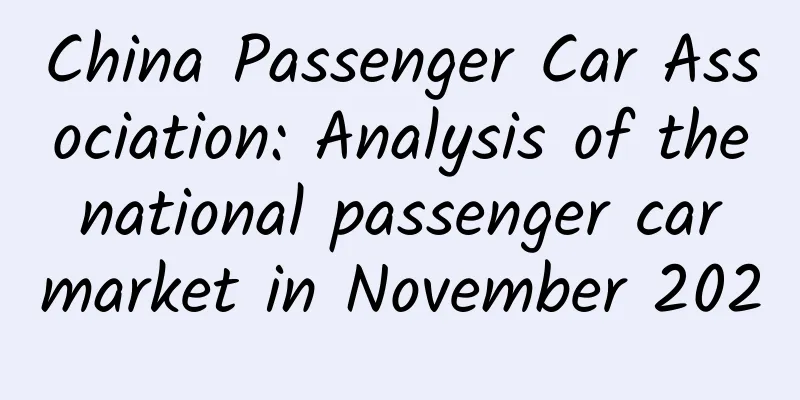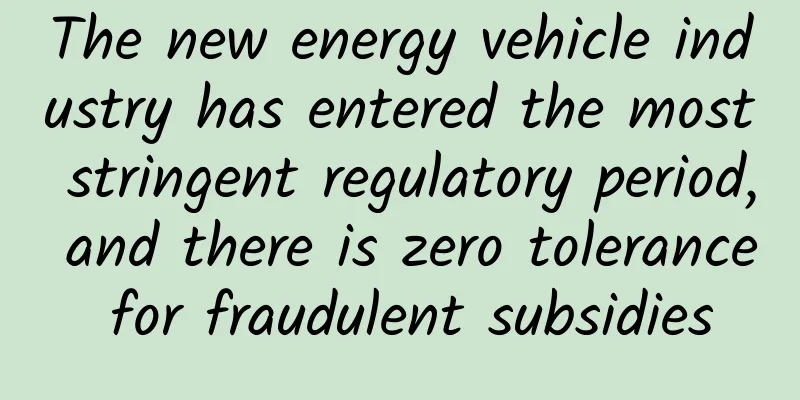China Passenger Car Association: Analysis of the national passenger car market in November 2020

|
1. Review of the national passenger car market in November Retail: In November, the retail sales of passenger cars reached 2.081 million units, an increase of 8.0% year-on-year from November last year, achieving the highest growth rate of about 8% for 5 consecutive months in the past two years. The cumulative growth rate of retail sales from January to November this year was -8.3%, an increase of 2 percentage points from the cumulative growth rate of -10.2% from January to October, reflecting the steady recovery of the industry. The national passenger car market maintained a strong growth trend from July to November this year. This is firstly due to the unexpected recovery of the macro economy and export market. Secondly, the obvious doubling of the retail sales of new energy vehicles has driven the car market to strengthen. Due to the early start of car purchases before the Spring Festival at the end of last year, the retail sales of traditional cars in November this year were 1.913 million, an increase of 57,000 vehicles year-on-year, and the year-on-year growth rate was only 3.1%, slightly weaker than the 4.4% in October. The recent emergence of new crown cases in some regions, "preventing imports from outside and rebounding from inside" also slowed down the recovery of retail sales. In November, the retail sales of new energy vehicles were 169,000, an increase of 97,000 vehicles year-on-year, and a year-on-year growth rate of 136.5%. The penetration rate of passenger car retail market was 8.0%, becoming the core driving force for the growth of passenger car retail sales. Luxury car retail sales in November increased by 27.0% year-on-year and 5.0% month-on-month from October, maintaining a strong growth trend. The demand for high-end replacement purchases due to consumption upgrades remains strong, with German luxury cars stabilizing at the end of the year and American luxury cars such as Tesla, Cadillac, and Lincoln performing extremely well. In November, the retail sales of domestic brands increased by 9.0% year-on-year and 9.0% month-on-month from October; the market share was 39.1%, an increase of 0.4% over the same period last year. The retail sales of domestic brands of traditional cars remained the same year-on-year, while the growth rate of new energy vehicles doubled year-on-year. State-owned domestic brands performed extremely well, with traditional cars of brands such as Hongqi, Changan, Great Wall, and Chery growing at a high year-on-year rate. In November, retail sales of mainstream joint venture brands increased by 3.0% year-on-year, but increased by 1.0% month-on-month from October; among them, the share of Japanese and American brands strengthened, increasing by 3 percentage points year-on-year. From January to November 2020, the national passenger car market had a cumulative retail sales of 17.002 million vehicles, a cumulative year-on-year decrease of 8.3%. This year's cumulative sales volume decreased by 1.54 million vehicles year-on-year, accounting for about 8.3 percentage points of last year's total retail sales. This year's retail sales decline was mainly due to the early Spring Festival and the impact of the epidemic on the first half of the year, which was 2.25 million vehicles. From July to November, retail sales increased by 650,000 vehicles year-on-year. If December maintains the net increase of 150,000 vehicles in November, the annual retail sales are expected to lose 1.40 million vehicles, a decrease of 7.0%. Exports: In November, the China Passenger Car Association exported 82,000 passenger cars, up 87.3% year-on-year. Among them, the export of self-owned brands reached 70,000, up 108.0% year-on-year, while the export of joint venture brands fell by 37.0%. SAIC Passenger Car, Geely, Great Wall, and Chery all doubled their exports, among which SAIC Passenger Car's new energy exports were particularly strong. Production: In November, passenger car production was 2.278 million units, up 8.0% year-on-year from November 2019; from January to November, a total of 17.156 million units were produced, down 8.1% year-on-year, with a production reduction of 1.511 million units. In November, luxury car production increased by 24.0% year-on-year, joint venture brands increased by 1.0% year-on-year, and domestic brands decreased by 7.0% year-on-year, of which domestic SUV production decreased by 10.0% year-on-year. Wholesale: In November, the wholesale sales volume of manufacturers reached 2.263 million units, up 11.3% year-on-year from November last year and up 9.2% month-on-month from October. From January to November, the cumulative wholesale sales volume reached 17.451 million units, down 7.8% year-on-year, a decrease of 1.475 million units. The downturn of traditional domestic brands this year led to a weak trend at the end of the year. Inventory: At the end of November, the manufacturer's inventory decreased by 137,000 vehicles, and the channel inventory increased by 99,000 vehicles. The channel inventory decreased by 120,000 vehicles from January to November. The dealer inventory continued to be replenished slightly from September to November, and the replenishment was relatively strong in November. New energy: In November, the wholesale sales of new energy passenger vehicles reached 180,000 units, up 128.6% year-on-year and 24.8% month-on-month from October. Among them, the sales of plug-in hybrid vehicles reached 30,000 units, up 160.0% year-on-year. The wholesale sales of pure electric vehicles reached 150,000 units, up 122.3% year-on-year. In November, the strong growth trend of electric vehicles at both high and low ends was obvious, among which the sales volume of A00 class reached 48,000, and the share increased to 32.0% of pure electric vehicles. The B class accounted for 23.0%, with a strong year-on-year growth. In November, the leading enterprises in the new energy passenger vehicle market performed well, with the top three enterprises exceeding 20,000 units, including SAIC-GM-Wuling with 36,070 units, BYD with 26,015 units, and Tesla China with 21,604 units. The top three accounted for 46.5% of the total new energy vehicle sales. The retail volume of new energy models achieved a new breakthrough, with Wuling Hongguang MINI selling 33,094 units and MODEL3 selling 21,604 units, and the scale advantage gradually manifested. Traditional independent automakers' new energy vehicles continued to strengthen, with Great Wall Motors and GAC Aion also experiencing high growth, and the performance of new energy vehicles of large groups became increasingly differentiated. New forces such as NIO, Li Auto, WM Motor, Xpeng, Hozon, and Leapmotor still maintained strong growth. In November, wholesale sales of ordinary hybrid passenger cars reached 42,000 units, up 13% year-on-year. 2. Outlook for the national passenger car market in December December has 23 working days, one more than December 2019, so the growth momentum of auto market production and sales is relatively strong. Although there is information about shortages on the supply side, memory or chip shortages have been common for many years. Based on the experience of the computer industry, it will not have much impact on production and sales, but it will help to continue to adjust price discounts before the New Year. Due to the impact of the epidemic, manufacturers' sales targets have generally been lowered this year, and the marketing and promotion strategies of various automakers have diverged at the end of the year. Luxury brands are affected by supply, and dealers are not very enthusiastic about the year-end rush. Considering that the high growth rate in January next year is a foregone conclusion, there will be no large-scale transfer of sales at the end of this year, and many manufacturers still hope that this year will have a more satisfactory ending. In December, my country entered the peak sales period of winter for passenger cars. The core driving force of the year-end growth in previous years was the strong sales of medium- and low-priced domestic brands. In the past two years, the low-end market has shrunk severely, domestic brands have been severely differentiated, some domestic brands have difficulty in channels, the year-end tail effect has been severely blocked, and the market concentration of domestic brands continues to rise. According to statistics, local consumption promotion policies in 8 provinces and 35 prefecture-level cities will expire before the end of the year, which will have a certain stimulating effect on automobile consumption at the end of the year. However, since the Spring Festival next year is relatively late and the pre-holiday hot sales period is postponed, retail sales in December will not be too hot. In terms of new energy products, with Beijing increasing the number of license plates by 20,000 and Shanghai panic buying new energy vehicles, coupled with the strong momentum of enterprises' strong pursuit of new energy production and sales, it is expected that the domestic new energy vehicle market will continue to grow at a high rate month-on-month in the last month of the year. The willingness of first-tier cities, especially Shanghai, to purchase new energy vehicles in the future is expected to continue to rise, which may form a demonstration effect for second- and third-tier cities. Judging from the situation that direct-sale centers in major cities have begun to clear out Tesla test drive cars, whether it is the facelift of Model 3 and X, or the mass delivery of Model Y, it will inject new vitality into the new energy high-end vehicle market. 3. The 2021 passenger car market forecast should be cautious In 2020, China's auto market showed a "V-shaped" reversal trend. In 2021, the auto market will continue the trend of continued recovery in 2020, with a strong growth momentum. According to the production and sales data trend forecast of the China Passenger Car Association from January to November, the growth rate of passenger car wholesale and retail sales in 2020 was around -7%. Considering that there are still many uncertainties in 2021, everyone is generally optimistic and cautious about the trend in 2021. The forecast judgment of the manufacturer forecast team of the China Passenger Car Association in early November was that the growth rate of passenger car wholesale in a narrow sense in 2021 would be 9%, the growth rate of retail sales would be 7%, and the growth rate of automobiles would be 4%. There are many favorable factors for the market optimism in 2021. First, the low base has made a huge contribution. According to the retail data of the China Passenger Car Association, retail sales in January-June 20 decreased by 2.26 million vehicles compared with the previous year, a year-on-year decrease of 23%. The same increase in 2021 is a 29% increase from the low base. Secondly, the late Spring Festival has brought about the release of super demand. The Spring Festival in 2021 is on February 12, which is a big year for auto consumption. The hot sales before the festival have led to super strong retail sales before the Spring Festival. It is estimated that the sales growth rate of the Spring Festival factors in January and February should reach more than 75%. Therefore, the growth in the first half of 2021 is extremely optimistic. The third is the gradual recovery of demand in overseas markets. This year's epidemic has shown a rapid stabilization in China, and the spread of the overseas epidemic should gradually subside in the first half of next year. At the same time, overseas demand growth will be strong. The fourth is the huge contribution of new energy growth. There is still pressure on growth in 2021. First, the auto market consumption promotion policies in various places during the epidemic were withdrawn. The consumption promotion policies under the epidemic in 2020 were very strong, and local governments also introduced combined measures to promote policies such as old-for-new, but these policies basically expired in 2020. In the future, it should be difficult for local governments to continue to introduce real money to promote consumption support policies. This year, Beijing, Shanghai, Hangzhou and other places have short-term measures to increase license plates, which will be difficult to increase in the future. Secondly, the entry-level consumption capacity continues to weaken. At present, the downward pressure reflected by the decline in young people's demand on the car purchase side is particularly large. Coupled with the profound impact of high housing prices, economical traditional cars continue to shrink, and domestic brands continue to be sluggish. Third, the demand for replacement purchases has slowed down. The demand for personalized travel under the epidemic is strong, and the demand for replacement purchases among mid-to-high-end consumer groups has exploded rapidly. The growth momentum in 2021 may decline. Especially considering the interference of uncertain factors in the external environment under Sino-US relations, the market forecast for 2021 should be relatively cautious on the basis of optimism. 4. New energy passenger vehicles will grow at a super high speed in 2021 In 2020, the Chinese auto market showed a "V-shaped" reversal trend, among which new energy vehicles showed a low-to-high trend, with a growth rate of -43% in the first half of the year and an estimated growth rate of 70% in the second half of the year. According to the data of the China Passenger Car Association, the annual sales volume is expected to be 1.13 million vehicles. This is due to both the base factor and the accumulation of new energy for new energy vehicles. The new energy of new energy vehicles in 2020 has been reflected, and high-end Tesla and Hongguang MINI, a micro electric vehicle, have become the core force driving market growth. The core of all of them is to accelerate cost reduction and meet more consumer needs, which is the key driving factor for the sustainable development of the industry. Looking forward to 2021, cost reduction is still the key to narrowing the gap between new energy vehicles and traditional vehicles in the near future, because at this stage, there is no obvious difference in intelligence between new energy vehicles and traditional vehicles, and many intelligent configurations of traditional fuel vehicles are also idle and wasted, and there is huge potential for increasing the frequency of user use. Judging from the OTA upgrade of traditional fuel vehicles released by Geely at the Guangzhou Auto Show at the end of November, traditional fuel vehicles are also drawing on the accumulated usage data of new energy vehicle users to bring users freshness and practicality from the software level. With the deepening of the dual-credit policy, there is still huge room for growth in new energy vehicles at both the high and low ends in 2021, and it should be entirely possible for each to grow by 150,000 vehicles. The incremental development of electric vehicles in restricted cities overlaps with the growth of high-end electric vehicles, and electric vehicles in the mainstream market of non-restricted cities will gradually start. With the strict implementation of the double-credit policy, joint venture brand new energy vehicles will have a certain incremental contribution. Recently, the Japanese and American governments have changed their new energy development strategies, especially the Japanese government's strong support for the development of electric vehicles has gradually become clear. Japanese automakers are forced to accelerate the promotion of electric vehicles. The speed of joint ventures in the development of new energy in China has the potential for explosive growth. The growth in 2021 is relatively flexible. New energy vehicle manufacturing companies have also entered a period of stable development. As they are moving towards the high-end market, it is likely that their sales will grow steadily and slightly. Traditional car companies are the core key to the development of new energy. Independent companies such as BYD, Wuling, and SAIC will continue to grow stronger, while joint ventures such as Volkswagen and other companies are really working hard on new energy, and the potential for new products is also huge. 5. Three-cylinder engines need support Passenger car three-cylinder engines provide higher efficiency, lower fuel consumption, and more spacious cabin space than four-cylinder engines, and are the future development trend. With the promotion of energy conservation and emission reduction and the pressure of the fourth-stage fuel consumption indicators, the three-cylinder engine has gradually accelerated since 2018. In 2018, there were 192 new car models announced to be equipped with three-cylinder engines, and in 2019, there were 307 models, but from January to September 2020, there were only 82 new car models. From the perspective of the retail share of the domestic traditional fuel vehicle market, the proportion of three-cylinder engines has dropped from 0.7% in 2016, 1.2% in 2017, 2.9% in 2018, 6.2% in 2019, to 5.7% this year. After manufacturers actively promoted three-cylinder engines, the market acceptance was not high. Luxury cars, joint venture brands, and independent brands are very enthusiastic about promoting three-cylinder engines, but the promotion effect is not very ideal. In recent years, the market performance of some car companies has been relatively stressful, which is actually related to the low market acceptance of three-cylinder engines. At present, these companies are also promoting the coordinated development of three-cylinder engines and four-cylinder engines, and are not pushing the three-cylinder engine strategy too aggressively, or making some moderate adjustments based on the aggressive strategy, so that the three-cylinder engine can meet the needs of a certain mainstream consumer group, and the four-cylinder engine can meet the needs of some conservative users. In this way, the entire enterprise can achieve a balance between energy conservation and emission reduction and consumer demand, which should have a good driving effect on the development of three-cylinder engines and the overall technological progress. The energy-saving car subsidies that started in 2012 should be a good measure to promote the technological progress and product upgrade of small-displacement vehicles. The recent policy guidance to encourage energy conservation and emission reduction is mainly to support new energy vehicles. The incentive policy for low-fuel consumption models is not enough to offset the inertial consumption of the market. In the future, there should still be certain policy incentives to promote the development of energy-saving vehicles, so that small-displacement energy-saving lines such as three-cylinder engines can be accepted by consumers more quickly. 6. RCEP is good for the development of the automotive industry On November 15, 2020, the ten ASEAN countries, as well as China, South Korea, Japan, Australia and New Zealand, formally signed the Regional Comprehensive Economic Partnership (RCEP). According to the analysis of the Ministry of Commerce: After the agreement comes into effect, more than 90% of the goods trade in the region will eventually achieve zero tariffs, and the tariffs will mainly be reduced to zero immediately or within 10 years, making it possible for the RCEP free trade zone to fulfill all its goods trade liberalization commitments in a relatively short period of time. The Regional Comprehensive Economic Partnership Agreement (RCEP) takes into account the national conditions of different countries, grants special and differential treatment to the least developed countries, and takes into account the demands of all parties to the greatest extent. Therefore, it has a gradual impact on the existing trade environment. In the short term, the direct benefits are concentrated on the import business of Japanese and Korean parts. Since the prices of high-end vehicles in China are relatively high at this stage, the signing of RCEP will be conducive to the import growth of Japanese and Korean automakers. Therefore, the benefits of Japanese high-end cars will be greater, and the impact on the industry will be relatively limited. However, the rate of decline in tariffs is slow and steadily declining year by year, and luxury cars are currently dominated by German cars, so the overall impact is not significant. There is a small probability that some European brands will be promoted to accelerate the localization process. Cooperation in the automotive parts system is conducive to Chinese automakers going global and achieving sustainable growth. Recently, Chinese auto companies have developed rapidly in Southeast Asia. They need to accelerate the construction of industrial chains, overseas investment policies and feasibility studies of financial instruments, and promote the construction of integrated industrial supply chains. In the long run, as China continues to adhere to its opening-up policy, RCEP may become an opportunity to promote the deepening of WTO reforms. With the transformation to new energy, China's overseas auto market has great potential for development. via Futu NiuNiu |
<<: Ericsson: A guide to Industry 4.0 transformation using dedicated cellular technology
>>: When Joyoung meets intelligence, the healthy kitchen of the future will come sooner
Recommend
Case analysis of Toutiao information flow advertising
Based on our actual promotion situation, the effe...
Wireless virtual reality will eventually arrive, but consumers need to be patient
The famous technology website CNET wrote an artic...
How to do social private domain marketing well?
In 2021, more and more large companies will deplo...
Android performance optimization - detailed explanation of memory management explosion caused by OOM crash
[[414819]] Preface In app development, images are...
Let the concept car hit the road! Roewe MARVEL X reaches 100 km/h in 4 seconds, redefining smart cars
The 2018 Beijing Auto Show is about to open. For ...
How much does it cost to join a catering mini program in Hailar?
How much does it cost to join a catering mini pro...
Zhihu monetization guide, look here!
I have been working on a Zhihu project recently, ...
Feishu Competitive Product Analysis
In recent years, OA office vertical products have...
Community traffic case analysis
This article will specifically analyze a fission ...
Fengjie teaches you how to write 10w+ stories
Fengjie’s article became popular. The article &qu...
Apple's Chinese employee was arrested before switching to Xpeng Motors and accused of stealing Apple's autonomous driving trade secrets
On July 7, former Apple engineer Zhang Xiaolang w...
The living room turns into a classroom to see how LeTV Kids solves the pain points of early childhood education
On November 18, Jia Yueting, chairman of LeEco, p...
A complete guide to getting started and advanced levels in event operation and promotion!
This article comprehensively explains the framewo...
How does a brand do marketing? If Apple sells apples, would you buy them? ?
Let’s first look at two interesting marketing hyp...









